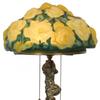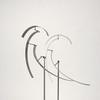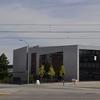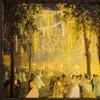Yale Peabody Museum Gets a $160 Million Gift
- NEW HAVEN, Connecticut
- /
- August 28, 2018
Yale University has announced a contribution of $160 million by Edward P. Bass ’67 toward the renovation of the Peabody Museum of Natural History. The landmark commitment ranks among the most generous gifts to Yale and is the largest known gift ever made to a natural history museum in the United States.
Bass’ contribution will help to fund the renewal and expansion of the acclaimed museum, which has operated in its current location for over 90 years. Founded in 1866, the museum has enjoyed worldwide recognition for its dinosaur fossils, mammal displays, minerals, and anthropology collections. The full scope and timeline for the renovation are still under development, and fundraising for the project is ongoing.
President Peter Salovey ’86 Ph.D. said, “I am deeply grateful to Ed Bass for a gift that will transform the Peabody. Imagine an expanded natural history museum where the exhibits reflect the most current science; where faculty members and students can more efficiently use the collections; and where our investigators have spectacular research facilities. This is a magnificent gift.”
Among the university’s most generous donors, Bass previously endowed the directorship of the Peabody and has provided other funding to the museum. He has also supported the strategic development of Yale’s campus, with a focus on Science Hill and the new residential colleges, and he continues to advise the Buildings and Grounds Committee. He serves on the Architecture Dean’s Council and the Peabody Leadership Council, is the former co-chair of the Yale Development Council, and is a former senior fellow of the Yale Board of Trustees.
“Ed has transformed the scientific landscape at Yale,” Salovey said. “He was the founding donor of the Yale Institute for Biospheric Studies, a leading contributor to the Class of 1954 Environmental Science Center, and a major supporter of the Yale Science Building, among other projects. His contributions to the Peabody will further advance scientific research and teaching at Yale.”
Earlier this year, Bass made a gift to fund the construction of the O.C. Marsh Lecture Hall, which will be part of the new Yale Science Building currently rising next door to the Peabody. The 500-seat lecture hall is named in honor of Othniel Charles (O.C.) Marsh B.A. 1860, a pioneering professor of vertebrate paleontology at Yale — the first in the United States — and one of the founders of the museum.
“Museum narratives should change at the same pace as our understanding of the world, which constantly evolves,” said David Skelly, the Frank R. Oastler Professor of Ecology and director of the Peabody. “With funding provided by Ed Bass and other donors, we can renew the Peabody as a gateway for the sciences — one that is equipped physically and programmatically to operate at the very cutting edge of scientific research, teaching, and public education.”
Yale’s reputation for leadership in the sciences is grounded historically in the Peabody Museum, founded 152 years ago,” Bass said. “This renovation and expansion will enhance every aspect of the Peabody, bringing it up to date and preparing it for the future. We will have 50% more gallery space, cutting-edge exhibits, and the ability to put the extraordinarily rich collection not only on view for the public, but also in the hands of researchers and students alike.”
The Yale Peabody Museum of Natural History is among the oldest and largest university-based natural history museums. The current building opened to the public in 1925 and now contains more than 13 million objects in 10 different divisions and represents more than 4 billion years of geological, biological, and human history. The treasures housed in the Peabody greatly enhance research and teaching at Yale, and they draw visitors from across the region.
The planned renovation project will capture new space for the museum by building into an interior courtyard and loading dock and opening part of the lower level to public use. The configuration will create new spaces for research and for the study of the museum’s collections, while increasing the exhibit footprint by 50%. To better facilitate public outreach programs, the renovation will introduce a large central gallery, a lower-level lobby that can accommodate large groups, and classrooms for school children.
Skelly emphasized that the project will dedicate space to Yale students: “More than 1,200 graduate and undergraduate students encounter Peabody specimens as part of their coursework each year. We are excited that the renovation features new object study classrooms, which will expand opportunities for students to learn from the collections, faculty members, and museum staff.
“This is truly a historic moment for the Peabody,” Skelly said. “I am extremely grateful for Ed’s generous support of the museum and excited by what it will enable us to accomplish.”
Materials on display in the Great Hall of Dinosaurs and the Hall of Mammalian Evolution will be prominent in the renovated museum. As part of the project, the dinosaur and mammal skeletons will be cleaned, conserved, and remounted in dynamic poses that tell stories of feeding and hunting behaviors. New exhibit cases will make it easier for curators to switch out specimens; Skelly hopes that the exhibits will be refreshed every few years.
Some of the renovated exhibits will be inspired by the popular David Friend Hall, a state-of-the-art gem and mineral gallery that opened to the public in October 2016. Exhibit cases line the perimeter of Friend Hall, while freestanding pedestals showcase rare, large-scale specimens from the mineral and gem collections. Visitors can explore the gallery using an app created by Yale students.
Skelly envisions the design of the new exhibits will continue in this vein: The galleries will be grounded by the museum’s impressive objects, and technology will offer supplemental information about the specimens.
The Peabody collections are a resource not only for scholars at Yale but for those around the world. And Peabody curators — drawn from the ranks of the faculty — are leaders in research that gives us new insights into the Earth’s past, present, and future.
One goal of the renovation is to incorporate additional space for faculty members, postdoctoral fellows, graduate students, and undergraduates to work with collections. Alison Richard, professor emerita and senior research scientist in anthropology and chair of the Peabody Leadership Council, said: “With rapid advances in technology, new ways are emerging to ‘read’ the Peabody’s collections and mine them for fresh insights. This gives the collections a prominent role at a particularly exciting time for interdisciplinary research on earth history and the evolution of life — issues central to the future as well as the past.”
In 2016, Skelly created the Yale Peabody Museum Office of Student Programs, led by David Heiser, to support Yale student participation in the activities of the museum across all its departments and divisions. During the 2017–2018 academic year, over 120 students worked as research interns, educators, and student employees, assisting with divisional projects and conducting individual research. Among other skills, students may learn to prepare specimens, participate in fieldwork, digitize historical archives, identify and catalog new materials, or work with the Peabody’s collections management database.
Beyond its role supporting the university’s academic curriculum, the Peabody serves as one of the primary conduits of Yale science programs to the public. Over 130,000 people visit the museum each year, including 25,000 school children. Many children participate in programs such as Evolutions, a program for high-school students that focuses on science literacy, and SciCORPS, a science career orientation program. The Peabody Fellows Programs offer professional development opportunities for K-12 teachers, from multiday summer institutes to workshops during the academic year.
“These educational programs are so important, and they are emblematic of the Peabody’s role as a gateway to science,” said Skelly. “This renovation will enable us to not only inspire more local schoolchildren, but also the whole Yale community, by supporting better outreach, teaching, and new discoveries. I can’t wait to begin.”
For more information about the museum renovation, visit the Peabody website.













![Offering a Truce [Bested], 1895, is estimated to sell for between $1,300,000 and $1,800,000 on March 22, 2014, for The Russell: An Exhibition and Sale to Benefit the C.M. Russell Museum. Offering a Truce [Bested], 1895, is estimated to sell for between $1,300,000 and $1,800,000 on March 22, 2014, for The Russell: An Exhibition and Sale to Benefit the C.M. Russell Museum.](/images/c/a8/20/Dec10_Offering_a_Truce__Bested_300dpi100x100_c.jpg)

